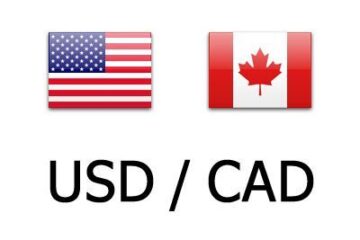Ford’s reported plan to cut thousands of jobs from its internal combustion division has some analysts expecting other automakers to follow suit.
James Farley says change is coming.
The Ford (F) – Get Ford Motor Company Report CEO acknowledged during the automaker’s second-quarter earnings call that “we absolutely have too many people in certain places, no doubt about it.”
Ford recently reported stronger-than-expected earnings in its latest quarter. At the same time, it is preparing to lay off 8,000 salaried employees, or almost a quarter of its U.S. workforce, in order to cut $3 billion in operational costs by 2026, according to Bloomberg News.
The cuts are focused on the company’s internal combustion engine unit. Farley said that “cost reduction will happen in our ICE business because that’s primarily what is made up of Ford today.”
As the company shifts more and more towards electric vehicles, “we have skills that don’t work anymore,” he said, according to a transcript of the earnings call. “We have jobs that need to change.”
The battery-electric vehicle unit, Ford Model e, is seen as the automaker’s long-term future, with the launch of vehicles like the Ford Mustang Mach-E, F-150 Lighting pickup and more to come.
Electric vehicles are the long-term future for most of the legacy automakers, as well, and some analysts believe that these other companies will also be laying off workers.
Timothy Johnson, professor of the practice of energy and the environment at Duke University, said he would be not be surprised to see more layoff announcements, as “automakers are shifting their engineering work from improving internal combustion engine performance to developing electric powertrains as they transition to electric vehicles.”
‘A State of Transition’
“Engineers, of course, can retool their expertise, but doing so takes time and will undoubtedly be difficult for many who have spent decades developing that knowledge and intuition,” he said. “The automakers may simply find it easier to hire new talent.”
While retraining assembly workers should be easier, Johnson said “electric powertrains have far, far fewer parts than internal combustion engines, and electric vehicle production can get by with a smaller workforce.”
“The auto industry is in a state of transition,” said Brian V. Larson, marketing professor Widener University. “Ford’s move to redeploy resources to meet the future will not likely be an isolated incident. Other traditional auto manufacturers will also be adjusting.”
While the future seems to be bright for EVs, Larsen said that internal combustion engines still have a place.
“Many environments and applications are still better suited to these engines,” he said. “And with the continued advances like renewable fuels and innovative improvements to internal combustion engine design, they will be around for quite some time.”
‘New Talent and Leadership’
Ford apparently feels the same way, as Farley told analysts that Ford Blue, the company’s internal combustion division, is motivated by a “sharpening focus on our ICE and hybrid products.”
“We’ve added new talent and leadership to drive performance and focus in our trucks, our great family lineup and our enthusiast vehicles we’re so proud of,” he said. “We’ve revealed new vehicles like the Bronco Raptor, the Bronco Everglades, the F-150 Raptor R, which my kids think sounds great.’
The changing workforce issue is a cause of concern for labor officials.
In an interview with the Associated Press, Joe Curry, president of the United Auto Workers said that if the UAW can’t organize workers at new electric-vehicle battery factories that will supply Detroit’s three automakers, the union’s future would be in serious doubt.
“It’s going to be key to lock down that type of new technology,” Curry said. “Everybody is dependent upon what happens out of that bargaining.”
‘Super Bad Feeling’
Certainly, the overall economic picture is somewhat bleak.
Last month, Tesla (TSLA) – Get Tesla Inc. Report CEO Elon Musk warned of impending job cuts and said he had a “super bad” feeling about the global economy.
On July 26, General Motors (GM) – Get General Motors Company Report posted softer-than-expected second quarter earnings and said it would slow hiring and cut spending as it prepared for what could be weaker demand over the final half of the year.
Edward Moya, senior market analyst for the Americas with Oanda, noted that “car manufacturers are staring at a weakening consumer given the weakening macroeconomic environment.”
“Everyone was ramping up production due to the pandemic and bolstering investment for electric vehicles, but now we are going to see much softer demand as the economy heads towards at the very least a mild recession,” he said.
EV Jobs Surging
The statistics favor the clean energy sector.
The U.S. Department of Energy’s US Energy and Employment Report found that energy jobs last year grew 4% from 2020, outpacing overall U.S. employment, which climbed 2.8% in the same time period.
Electric vehicle jobs surged a stunning 26.2%, or 21,961, in 2021, while fossil fuel jobs accounted for the most fuel jobs lost.
Louis Navellier, founder of money manager Navellier & Associates. doesn’t believe that other automakers will follow Ford’s lead.
“I do not expect other carmakers to make job cuts, unless they abandon their dealer model,” he said. “Ford split its business into EV and internal combustion engine divisions. GM has not done that.”
Navellier noted that Ford recently secured deals with Chinese battery maker CATL.
Under one agreement, CATL will supply lithium iron phosphate battery packs for Ford’s North American Mustang Mach-Es next year and North American F-150 Lightning in early 2024.
‘Definitely Serious’
Farley told analysts that Ford struck a deal with CATL “on strategic cooperation for global battery supplies as well as deals for direct sourcing of critical battery raw materials in the U.S., Australia, Indonesia and more locations.”
“What is significant about the CATL announcement is that Ford will be making the Mach-E with iron phosphate batteries,” he said, “which are heavier and less efficient than the lithium-ion batteries currently supplied by LG Chem.”
The CATL agreement is a big deal, Navellier said, “since there is simply not enough lithium, nickel and cobalt available to make more lithium-ion batteries. Iron phosphate batteries are also safer and do not catch on fire.”
“Due to the CATL deal, Ford is definitely serious about converting to electric vehicles, since CATL will supply both iron phosphate and lithium-ion batteries to help Ford outpace GM in EVs,” he said.
Farley told analysts that “there’s so much we can do to change the profit profile of these vehicles.”
“The biggest thing we have to solve for in all of that is the battery cost, and we can’t wait to take you through all of that,” he said.


